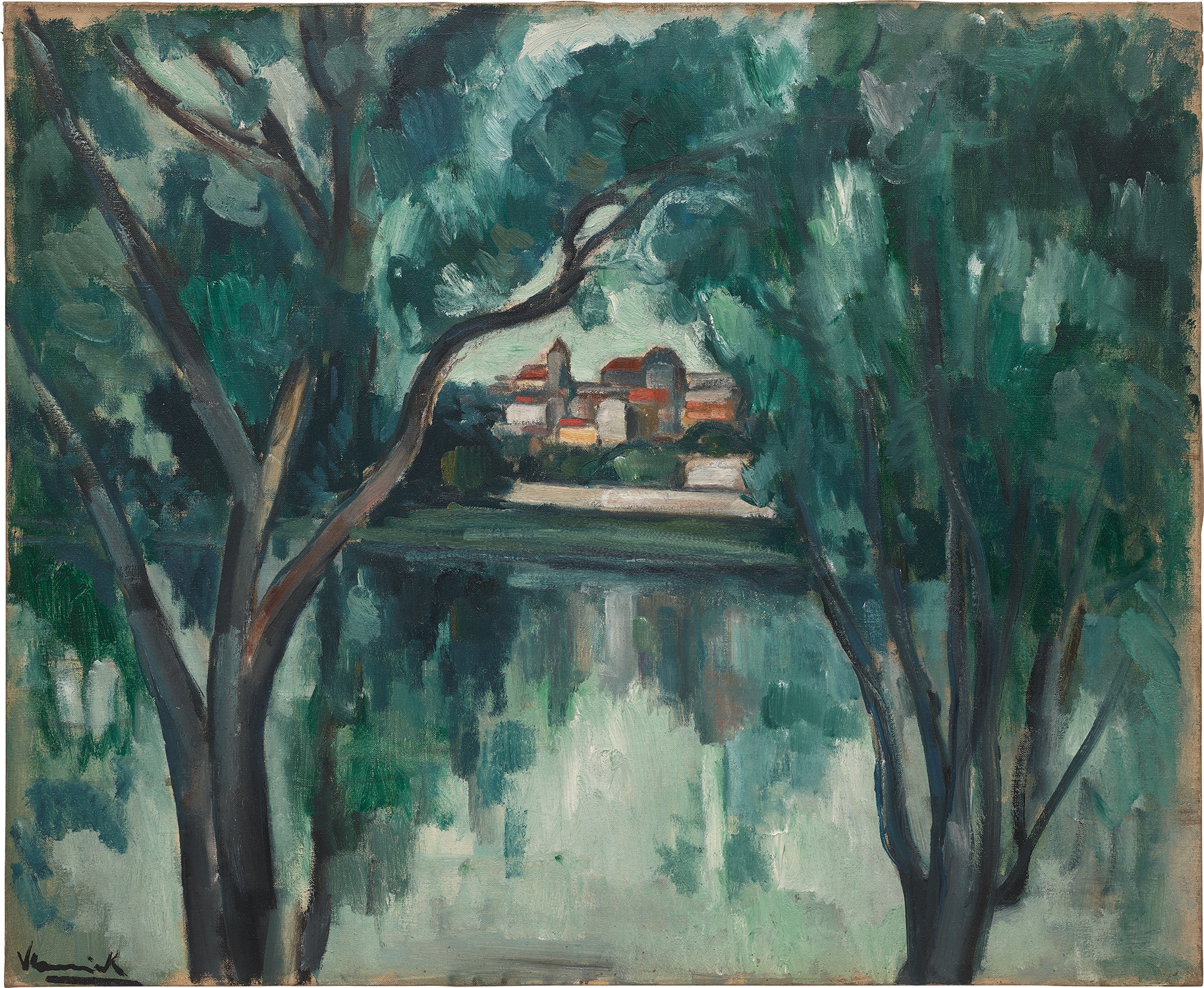

Property Restituted to the Heirs of Dane Reichsman
172
Maurice de Vlaminck
Village et bord de rivière
signed "Vlaminck" lower left
oil on canvas
23 5/8 x 28 3/4 in. (60 x 73 cm)
Painted circa 1911–1912.
This work is accompanied by an Attestation of Inclusion from the Wildenstein Institute and it will be included in the forthcoming Vlaminck digital database, being prepared under the sponsorship of the Wildenstein Plattner Institute, Inc.
This work is accompanied by an Attestation of Inclusion from the Wildenstein Institute and it will be included in the forthcoming Vlaminck digital database, being prepared under the sponsorship of the Wildenstein Plattner Institute, Inc.